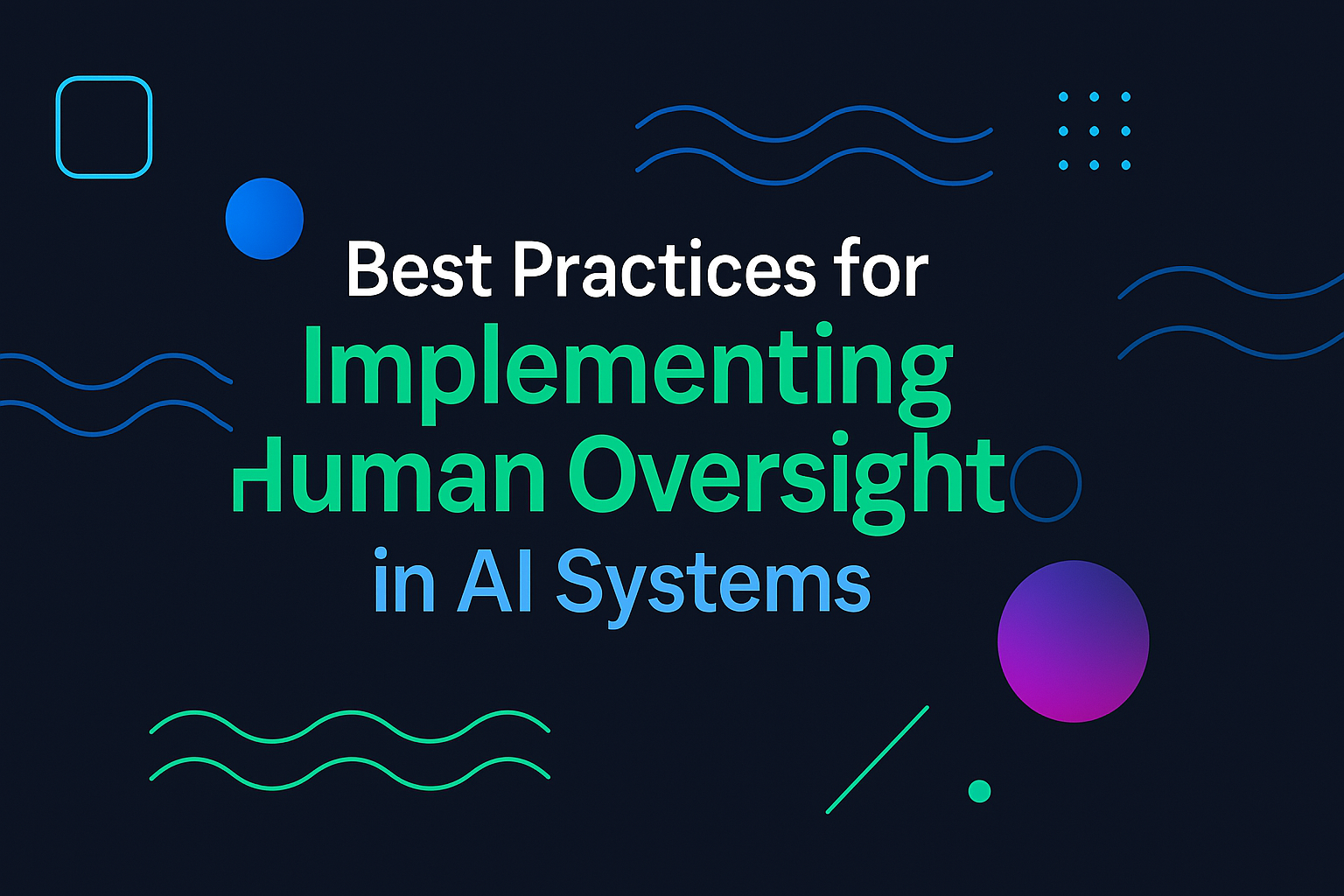Best Practices for Implementing Human Oversight in AI Systems
As AI systems become increasingly sophisticated and integrated into critical business processes, implementing effective human oversight has become a crucial aspect of AI deployment. This guide explores best practices and real-world examples to help you establish robust human oversight mechanisms in your AI systems.
Understanding the Role of Human Oversight
Human oversight in AI systems serves several key purposes:
- Quality Control: Ensuring AI outputs meet expected standards
- Risk Mitigation: Preventing harmful or incorrect actions
- Compliance: Meeting regulatory requirements
- Continuous Improvement: Providing feedback for system enhancement
Key Components of Effective Human Oversight
1. Clear Decision Points
Identify critical junctures where human intervention is necessary:
- High-risk decisions (e.g., financial transactions, medical diagnoses)
- Novel or edge cases
- Situations requiring ethical judgment
- Compliance-sensitive operations
2. Structured Review Processes
Implement systematic review workflows:
- Define approval hierarchies
- Establish clear escalation paths
- Set response time expectations
- Document decision rationale
3. Training and Guidelines
Equip human reviewers with:
- Clear decision criteria
- Contextual information
- Historical examples
- Regular training updates
Real-World Implementation Examples
Financial Services
A major bank implemented human oversight for loan approval AI:
- Automated initial screening
- Human review for borderline cases
- Senior officer approval for large loans
- Result: 30% reduction in processing time while maintaining risk standards
Healthcare
A hospital system’s AI-assisted diagnosis:
- AI suggests potential diagnoses
- Doctors review and confirm
- Specialists consulted for complex cases
- Outcome: Improved diagnostic accuracy by 15%
Content Moderation
Social media platform’s approach:
- AI flags potentially harmful content
- Human moderators review flagged content
- Appeals process for disputed decisions
- Impact: 40% faster response to harmful content
Common Challenges and Solutions
Challenge: Review Backlog
Solution: Implement priority queues and dynamic resource allocation
Challenge: Inconsistent Decisions
Solution: Develop clear guidelines and regular calibration sessions
Challenge: Reviewer Fatigue
Solution: Rotate reviewers and implement quality checks
Measuring Effectiveness
Key metrics to track:
- Review completion time
- Decision consistency
- Error rates
- Reviewer satisfaction
- System improvement over time
Future Trends
Emerging developments in human oversight:
- AI-assisted review processes
- Distributed review networks
- Real-time oversight capabilities
- Automated quality assurance
Conclusion
Effective human oversight is not just about adding human checks to AI systems—it’s about creating a symbiotic relationship where humans and AI work together to achieve better outcomes. By implementing these best practices, organizations can build more reliable, trustworthy, and effective AI systems.
Remember: The goal is not to replace human judgment but to enhance it with AI capabilities while maintaining appropriate safeguards.
